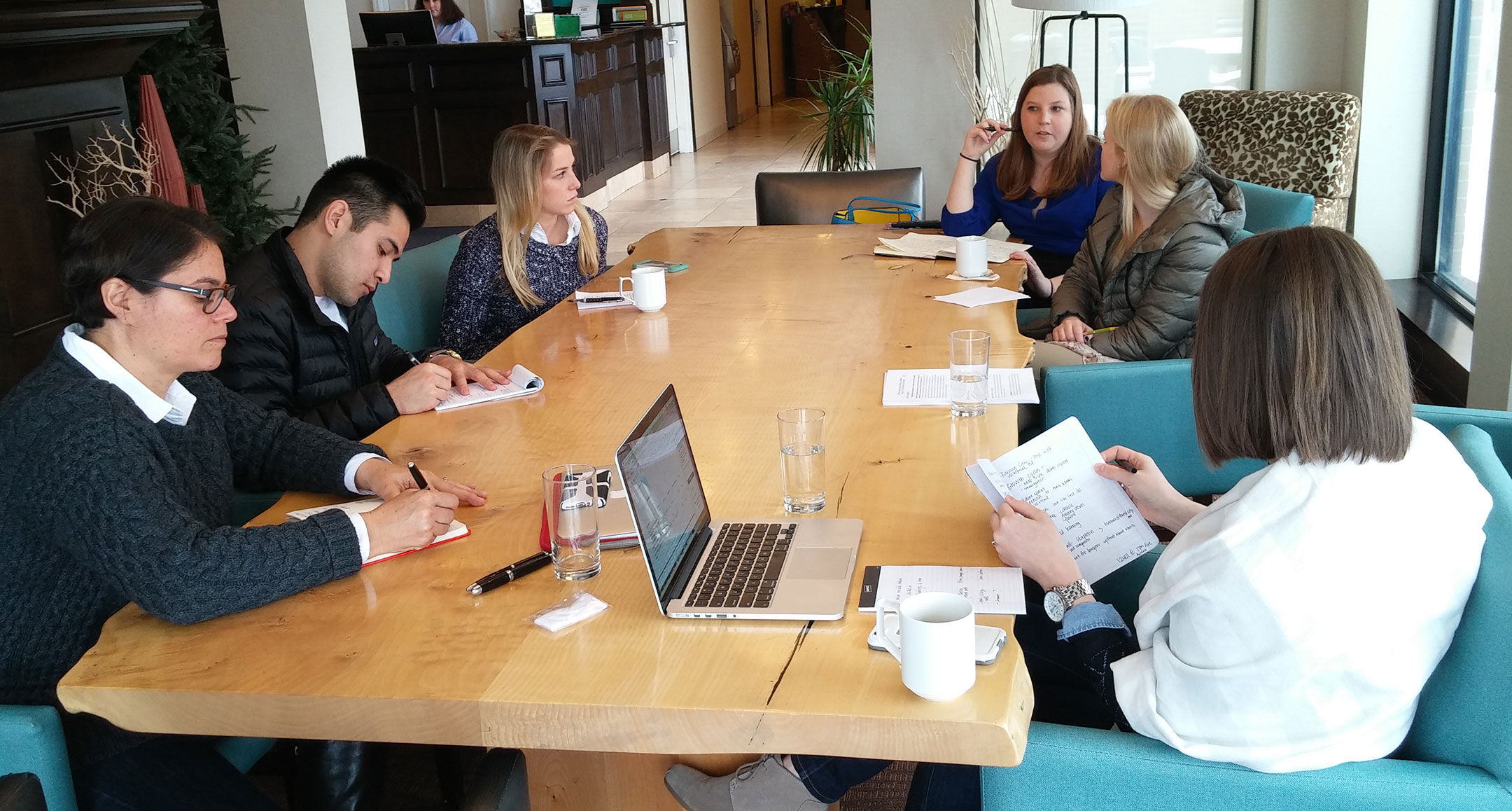Home » News » What Does it Mean to Go to School? The Sterling Ranch TIPs Project
What Does it Mean to Go to School? The Sterling Ranch TIPs Project
Posted by anderc8 on Monday, October 30, 2017 in News, TIPs 2015.
Written by Kristin Baese, EdD (Peabody College, 2017) and Eve Rifkin, EdD (Peabody College, 2017)
As doctoral students at Peabody College, we were given an opportunity of a lifetime: Imagine and design the school of the future. Eve, a charter school founder from Tucson, has a decade of experience in school innovation and a keen eye for engaging learning environments. Kristin, the director of a graduate teacher preparation program in Nashville, has first-hand experience with K-12 and higher education partnerships as well as a passion for preparing students for a fast-changing future. So, when the two of us were given the opportunity to design an education system for the new Sterling Ranch master planned community south of Denver, we knew the that framework that would guide student learning needed to be at the core of our plan.
Visit any school that claims to be innovative these days and you’ll hear educators extolling the virtues of “Project-Based Learning,” or PBL. This constructivist approach to teaching positions students as active agents in their own lines of inquiry as they plan, iterate and design projects intended to be shared with the public. Douglas County, home of the Sterling Ranch development, is a center of activity when it comes to PBL, with many of its district schools using it as their primary approach to education. Thus, when we began to examine the local context for evidence of innovative approaches to education, we had no shortage of material from which to draw; in fact they were surrounded by PBL. We quickly realized, though, that PBL, while an effective way to engage students, was not adequate in responding to the unique needs of Sterling Ranch, a community based on principles of environmental stewardship and energy sustainability, nor would it fully encompass the characteristics of innovative learning environments of the future.

This project meeting in Douglas County, Colo., near the Sterling Ranch site, illustrates the vertical and horizontal integration of this TIPS immersive experience (graduate/undergraduate collaboration). Pictured: Eve Rifkin, Kristin Baese, Stefano Scotti, Cason Close, Sophia Apple and Hayes McAlister.
Many educators actually prefer the term Problem-Based Education and have pushed against what they perceive as a “projects-for-project’s-sake” approach. They suggest that students should design projects that solve authentic problems. But which problems should students attempt to solve? Context is everything when it comes to the authenticity of a problem. The search in the desert for a more drought-resistant variety of tomato does not apply to coastal areas where storm water management is of greater concern. This is where a third approach to learning comes in: Place Best Based? Education.
The Sterling Ranch Capstone Project provided the perfect landscape (both literal and figurative) to examine how the intersection of project, problem and place can result in a new approach to education. This “P3BL” approach (designed by Baese and Rifkin) has the potential to serve several community needs through an integration of pedagogy and content that engages students with their communities, responds to local needs for a more skilled workforce and solves problems unique to the area.
The yearlong mixed-methods, immersive study was intended to shed light on the problem of designing a new educational ecosystem for a community with specific issues and unique geography. But we also saw a rare opportunity to learn from universal qualities of progressive school design, regardless of location. Our research brought us to innovative schools in the San Francisco Bay Area and Tucson, as well as to the Learning Environments For Tomorrow Institute at Harvard’s Graduate School of Education.
The schooling model of the future that we designed for Sterling Ranch brings together place, problem and project based learning approaches. Since the community is focused on sustainability, the experiences of the students in the schools should embody these key place characteristics to engage in authentic problems in their world and embark on projects that will empower them to address these projects.
Imagine third grade students measuring water levels in the rainwater catchment systems outside their building, investigating the design of its distribution and noticing that their neighbors aren’t fully using the water conservation technology available to them, and making recommendations for educating the community about more effective rainwater usage. What used to be divided into math, writing and science classes being combined into highly motivated and relevant learning experiences that empower students to think and interact in their world as problem noticers, definers and solvers.
The capstone project, now in its second year, continues to examine essential questions around education, namely: What does it mean to go to school? When educators, engineers, community members and land developers reflect on the architecture of schools and the teaching and learning that happens within them, a new vision for what is possible begins to emerge. This is the power of the sort of collaboration that the TIPs program cultivates and remains at the heart of the Sterling Ranch project.
If you’d like to join the conversation, please leave a comment or question in the space provided below.
